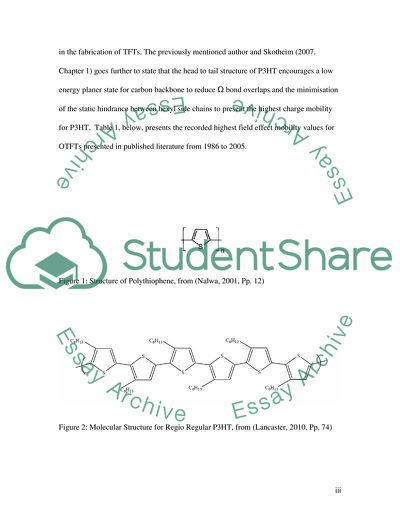Heterocyclic Organic Compounds Arranged Case Study Example | Topics and Well Written Essays - 2000 words. https://studentshare.org/physics/1741705-poly-3-hexylthiophene-p3ht
Heterocyclic Organic Compounds Arranged Case Study Example | Topics and Well Written Essays - 2000 Words. https://studentshare.org/physics/1741705-poly-3-hexylthiophene-p3ht.


